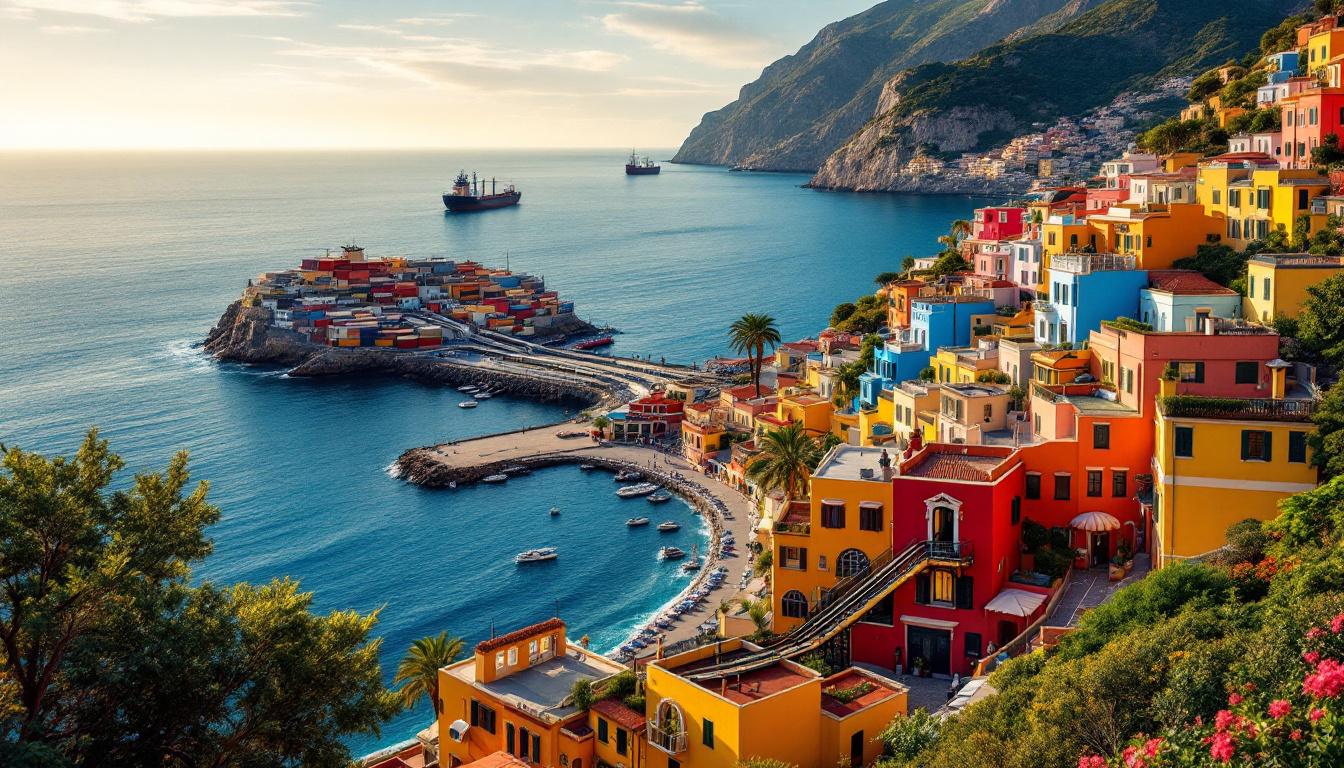When I first glimpsed Valparaíso’s colorful terraces cascading down steep cerros toward the Pacific, my breath caught. The hillside neighborhoods, painted in brilliant yellows, blues, and reds, looked exactly like Cinque Terre’s famous coastline. But as I wandered deeper into Chile’s bohemian port city, I discovered something the Italian Riviera can’t offer: authentic street art culture, working-class neighborhoods, and prices that won’t destroy your travel budget.
This UNESCO World Heritage city delivers all the visual drama of Italy’s most photographed coast, but with genuine local character that mass tourism hasn’t sanitized. Unlike Portofino’s polished perfection, Valparaíso pulses with real port energy, where naval ships share harbor space with colorful fishing boats and street artists transform every available wall into their canvas.
The numbers speak volumes: accommodation costs 70% less than Italian coastal towns, funicular rides cost under $1 versus $15 in Europe, and authentic Chilean meals run $12 compared to $45 in the Riviera. Yet the visual rewards match any Mediterranean postcard.
The hillside magic that rivals European coastlines
Cerro Concepción delivers Cinque Terre views
From Paseo Atkinson’s panoramic walkway, Valparaíso’s crescent-shaped bay unfolds like an amphitheater. The view mirrors Manarola’s iconic perspective, with colorful wooden houses tumbling toward deep blue water. But here, massive cargo ships and Chilean naval vessels add authentic maritime drama that sanitized tourist ports lack.
Authentic funicular system beats European alternatives
Valparaíso’s historic ascensores have carried residents up impossibly steep hillsides since the 1880s. Unlike Italy’s tourist-focused cable cars, these working funiculars transport locals to their hillside homes daily. Riding the Ascensor Artillería costs 50 cents and delivers views that rival $200 Italian excursions.
Street art culture Italy can’t match
Every wall becomes an authentic gallery
Chilean and international artists have transformed Valparaíso into South America’s largest open-air museum. Unlike Italy’s preserved Renaissance frescoes, this art lives and breathes. New murals appear weekly, creating an ever-evolving visual experience that makes each visit unique.
Local artists welcome cultural exchange
In Cerro Alegre’s narrow alleys, I met painters who explained their work’s cultural significance. This authentic interaction with living artists contrasts sharply with Italy’s museum-behind-glass experience. Here, art remains connected to community life and social expression.
Authentic port life versus tourist theater
Working harbor energy you can feel
Valparaíso remains Chile’s primary Pacific port, handling massive container ships and naval operations. This authentic maritime atmosphere permeates the entire city, from harbor-front seafood markets to sailors’ bars that have operated for decades. Italian coastal towns simply can’t replicate this working-port authenticity.
Pablo Neruda’s bohemian legacy lives on
Chile’s Nobel Prize-winning poet chose Valparaíso as his creative sanctuary, calling it beautifully absurd. His La Sebastiana house museum costs $5 versus $25 for similar literary sites in Italy. The surrounding neighborhood still attracts artists, writers, and musicians who maintain the city’s creative soul.
Budget-friendly luxury the Riviera can’t offer
Boutique hotels at fraction of European costs
Charming hillside hotels with panoramic ocean views cost $80-120 nightly, compared to $250-400 in Italian coastal towns. Many occupy restored 19th-century mansions with original architectural details that rival European luxury properties.
World-class dining without European prices
Fresh Pacific seafood and Chile’s acclaimed wines create memorable dining experiences for $15-25 per person. Local restaurants like Restaurante Bote Salvavidas combine excellent food with humanitarian missions, adding meaningful cultural connection impossible to find in tourist-focused Italian establishments.
Valparaíso proves you don’t need European prices for European-quality coastal beauty. This working port city delivers authentic cultural immersion alongside Instagram-worthy hillside views. While Cinque Terre charges premium prices for sanitized experiences, Chile’s “Jewel of the Pacific” offers genuine local life at prices that let you extend your adventure.
Pack layers for August’s mild winter weather, learn basic Spanish phrases, and prepare for Chile’s most visually stunning city to exceed every expectation. Book your Santiago flight and discover why savvy travelers choose authenticity over tourist theater.
Essential planning details
When should I visit Valparaíso for best experience?
August offers perfect escape from Northern Hemisphere summer heat, with mild temperatures (46-59°F) and fewer crowds. Winter’s cooler weather makes hillside exploration comfortable while avoiding peak season pricing.
How do I reach Valparaíso from Santiago?
Take a comfortable 2-hour bus ride from Santiago for $6-8 each way. Buses run hourly and drop you in Valparaíso’s city center, within walking distance of major funiculars.
Which neighborhoods offer the best Italian Riviera similarities?
Cerro Concepción and Cerro Alegre provide the most striking visual comparisons to Cinque Terre, with colorful terraced houses, ocean views, and cobblestone streets perfect for photography.
Is Valparaíso safe for solo travelers?
Stick to well-traveled cerros during daylight hours and avoid displaying expensive electronics. The historic hillside neighborhoods maintain strong community presence that enhances visitor safety.
What makes Valparaíso’s street art scene authentic?
Unlike commissioned tourist murals, Valparaíso’s art emerges from genuine community expression addressing social issues, cultural identity, and neighborhood pride. Artists live locally and create continuously, making the experience organic rather than performative.
